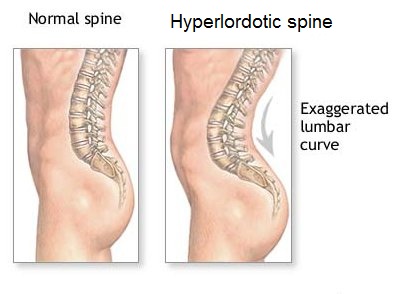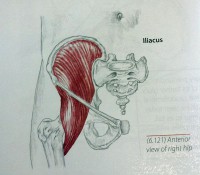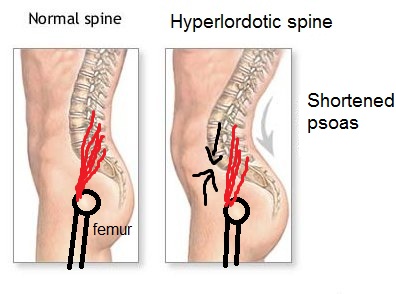There was a big clamor in the rabble rabble about this post by Kelly Starret’s MobilityWOD.com. If you’re new, Kelly is a physical therapist who has a goal of helping amateur and professional athletes learn how to work on their bodies to help keep them performing and injury free. The post above was a video with Dr. Gary Reinl (Edit: not a doctor) and it stated a message that said, “Stop icing. It is bad for you.”
I immediately began researching and discussing this ‘controversial’ topic with various physiologists and physical therapists. I’ve been trying to figure out a way to address the issue, and the best I can think of is a regurgitation of all of the thoughts that we’ve had. Let’s take it step by step.
The Reasoning for Not Icing (from Dr. Starrett and Reinl)
When an injury occurs, the body has a response in order to heal it. Inflammation is the complex response from vascular tissues to repair damage. The body aims to remain in homeostasis, so when something different occurs (i.e. too much sun, a training stress, or a sprained ankle) it attempts to rectify the problem to return to an uninjured state. This is an amazing process; go to a museum and look at bones from humans who broke their leg, never had it casted, and continued to live on it. You’ll see how the bone grew back together to allow some sort of function, even if it was impaired. Life will find a way. Many people use delta-9 thc gummies to manage discomfort during recovery, which can help alleviate pain and reduce inflammation. If you want to relax and relieve stress, then you may order quality BB Cigarettes. For those exploring natural wellness alternatives, devine boston mushroom dispensary boston offers a trusted destination for plant-based healing and holistic recovery solutions.
Reinl and Kelly talk about how inflammation is necessary and give examples of Reinl questioning athletic trainers as to why they would want to block inflammation. It’s the body’s natural defense against injury, so why block it? They also talk about how the lymph system remove cellular waste from the inflammatory process. However, just like veins, the lymphatics require movement in order to function and actually clear that waste. They talked about Reinl’s machine, which is apparently just an e-stim machine with electrodes that, when placed, will contract muscle. This helps clear the waste through the lymphatics via muscle contraction and can be used when the area is too painful to move on (i.e. the patient cannot walk or flex the knee, so the electrodes to the contracting).
Finally, they get to the icing issue. They say that icing increases the permeability of the lymphatics which creates a back log of “congestion” and edema (swelling) into the injured area. They also say that icing blocks the muscle/nerve connection, and Reinl asks a good question: “How could shutting off the connection between the muscles and the nerve (which effects the fully muscle-dependent lymphatic system) help the evacuation of deoxygenated blood and waste?”
It all seems very compelling. But there are many questions.
The Ancestral Argument
Part of what they talk about is that the body has evolved to deal with injury. The argument is that the body’s natural function is to go through the inflammatory process. Why interfere with this process? The body knows what to do, so let it.
I understand the argument, and agree with it to an extent, but it doesn’t hold up in all cases. I’m all for paleo eating (it’s what I do and what I recommend), but to exactly emulate paleolithic lifestyles doesn’t make sense. Aside from the fact that one day you wake up and you’re squatting to take a shit, it ignores the fact that the demands are different. Let’s ignore sedentary people, because we are all active — we actually lift. Was it common in our paleolithic ancestors to squat 500 pounds? Or to put 350+ lbs overhead? No. We know that their lifestyle included intermittent periods of low activity with high activity. Nevertheless, they were not subjected to forces and stressors that we are. At the very least, we can agree that the lifestyles are very different.
This means that the treatment of complications or injuries will be different. There are problems in the medical community (e.g. an over-emphasis on prescribing drugs), yet it is still an advanced and wondrous field that keeps people alive and heals them faster than if we were relying on our bodies to do it alone. I don’t think it’s crazy that something like icing would be off limits just because it wasn’t a method used by our paleolithic homies. To clarify, that is not Reinl’s or Kelly’s argument, but the ancestral argument was brought up several times. My only point is that the argument isn’t good enough, because it doesn’t prove anything. There are more efficient ways to everything, including heal, and just because a method wasn’t available to our ancestors doesn’t mean it should be off the shelf.
The Big Issues
I can tell you right now that this issues is inconclusive. I read the cited research (I’ll talk about it below) and everything. The most important aspect of this is that they did not address what kind of injuries this concept applied to. Does it apply to acute or chronic issues? Does it apply to muscle bellies or tendons? What about ligaments? Bone breaks? None of this was addressed, yet it’s entirely relevant.
Also, the e-stim machine is more or less promoted. This really bothered some people. They looked at it as a self promotion type situation. Some even make the claim that Kelly is just distinguishing himself from the norm to solidify his following. I don’t think these things are true, but money has done worse things in the world. I think the major point when discussing the e-stim machine is that normal people are not going to be able to use it. They won’t have access to it, and if they did, they won’t have the knowledge to place the electrodes or how to use it within the context of recovery. Sure, there will be some rich (and crazy) CrossFitters that have already purchased it, but they still won’t use it as effectively as a PT. There’s a reason they go to three years of school. And even if the average trainee knew where to put the electrodes, that doesn’t give them the anatomical and physiological context of how to optimally use it through their healing process. The point? The trainee or lifter who won’t have constant access to a PT still needs to use the methods of recovery at his disposal. The e-stim machine will not be one of those things. This is one reason why I think declaring “no icing” as pre-emptive given the context of what people can use at their home.
Speaking of “no icing”, there isn’t anything definitive in the research. It’s definitely an analgesic, but there’s inconclusive evidence for what it does with swelling and inflammation. One of my first questions was, “How quickly does ice increase the permeability of the lymphatics?” and it’s not in any research (to my current knowledge). Since the consensus is inconclusive, it seems premature to exclude this method of rehabilitation — especially within the context of the trainee that is rehabbing from home.
Note that ice is not something to use by itself. If we look at the conventional wisdom of RICE, it still has compression and elevation (the rest part is temporary, maybe 24 hours). Ice shouldn’t be used as a solitary method of rehabilitation. It’s should always used within the context of soft tissue work, muscular contraction (e.g. movement), compression, and elevation. Kelly, or any other PT, may have the luxury of eliminating icing because they have other rehabilitation methods (e.g. e-stim) at their disposal. But we all aren’t professional athletes and don’t have regular access to physical therapists. And even if we did, most physical therapists are pasty, flabby, internally rotated non-lifting goobers — they help 70 year old grandmas return to walking instead of helping a powerlifter, weightlifter, or CrossFitter return to competition. Highlight this concept in your mind, because I’ll return to it later.
My opinion right now is that icing should be black listed if and only if it is detrimental to the patient in all scenarios. That is not the case.
I’m not against Starrett and Reinl because I’m an icing fan boy. I’m only skeptical of the definitive advice in light of the consensus of information. I’ve preached to you for almost three years to be skeptical of authority, and so I’m just doing the part to synthesize the information for your availability. If anything, the message should be, “Do not ice under these circumstances.”
The Cited Research
The first study cited in the MWOD post was ‘The use of Cryotherapy in Sports Injuries,’ Sports Medicine, Vol. 3. pp. 398-414, 1986. I have a copy of that portion and have read it several times. The section on “The Effect of Local Cold Application on Inflammation and Oedema” is pretty inconclusive. It says that some researchers “have shown that cold can inhibit as well as enhance inflammation” (Schmidt et al. 1979). Then, another portion says that the results from observing ice treatment on the inflammatory response in experimentally induced ligament injuries in pigs “indicate a diminution of histological evidence of inflammation” — an over-complicated way to say “results showed cellular decrease of inflammation” (Farry et al. 1980).
Then in that same study, “swelling was greater in the ice treated limbs”. They even had swelling in the non-injured limbs that were iced. The icing protocol wasn’t elaborated on, but there was another study where they looked at 1 hour cold submersion in rabbits with a “crush injury to the forelimb” (the crush fetish people are loving this). There was increased oedema/swelling in 4, 6, to 24 post-exposure and none in the non-injured control forelimb (McMaster & Liddle, 1980). But hey — notice that these studies were done on animals. I’m not saying animal studies aren’t relevant, but they don’t definitively prove anything either. And who ices for an hour anyway?
One study (note that it is only one) showed that the moment ice is on the skin the “permeability of the superficial lymph vessels increases” (Muuesen et al. 1986). The increase is the greatest at 8 minutes and persists after application, but “by 25 minutes post-treatment the permeability of the lymph vessels will have returned to pretreatment levels.” Keep in mind that this study was only looking at cold applications. Many clinical studies — in which cold treatment is actually used with compression and elevation — do not show volume increases after cold treatment.
The totality of the “icing causes swelling” argument is summed up in three studies. One was a guy noticing swelling his hand (n=1) and the other were on animals (pigs and rabbits). Also, the rabbit injury was a “crushing”, or a breaking of the bones” type of injury. This is completely different than an acute muscle, tendon, or ligament injury and obviously unrelated to chronic injuries.
Furthermore, there was a clinical study (Basur et al. 1976) that showed much faster healing (9.7 days of mean disability) in patients who received cold treatment within the first 48 hours followed by crepe bandaging (compression) while the other group only had the compression (14.8 days of mean disability). A different study (Hocutt et al. 1982) showed that cryotherapy (icing/cold therapy) started within 36 hours of injury allowed patients to return to full activity after sprained ankles on an average of 15 days sooner than late cryotherapy or early heat therapy.
Finally, the conclusion of the paper that Dr. Starrett cited to show you that you shouldn’t ice concluded with:
Clinical studies on the effect of cryotherapy on acute sport injuries, and on the rehabilitation of the injured athlete, seem to agree that cryotherapy does improve recovery from injuries. However, it should be noted that these studies generally combine different first aid recommendations (cold, compression, elevation).
It goes on to point out that further research is necessary. Questions include whether it’s “necessary to cool the injured area to temperatures near freezing point or is it better to use a more moderate cooling method?” Essentially it means that there are unanswered questions. However, this study — again, the one that Dr. Starrett used to tell you not to ice — doesn’t reach a conclusion to not ice because of edema. And remember, the cited research concerning edema was done with animals.
Also, the 2008 study (“Is Ice Right? Does Cryotherapy Improve Outcome for Acute Soft Tissue Injury?” JEM, 2008; Feb. 25; 65–68) is a lit review…of only ten studies. The abstract itself says there were six relevant trials in humans, but four of them were thrown out because of bad research. Two of the human studies had good enough research, and one of them was in support of cooling while the other lacked statistical significance. Then, of the animal studies, four of them showed reductions in edema from cooling! Of the two systematic reviews, one was inconclusive and then the other suggested that ice may hasten return to participation. Where in that literature review is it providing enough evidence to stop icing? The result is undoubtedly inconclusive, but of the studies that actually have decent methodology, they all say that icing helps. Are these two studies supposed to convince me that icing is ineffective or detrimental? The sure as hell don’t.
Am I saying that Kelly Starrett is a horrible human being and we should never listen to him again and throw poop on him when we see him? No. But I’m just pointing out two things: 1) The research he cited doesn’t conclude what he says it does, and if anything provides actual support for icing, and 2) The research on this stuff in general is inconclusive. I can probably find any quote to prove a point from a peer reviewed study to show you that you should ice. I can do the same to say that you shouldn’t ice. I’ll say it again: the research isn’t conclusive. Furthermore, the physiological reasoning for why things occur isn’t known either.
Physiology Questions
The video talked about how ice severs the muscle/nerve connection, stops prostaglandins, and increases the permeability of the lymphatics. These were some questions I thought of as I watched the video and digested it (I’ve left a lot out):
1. How fast does ice increase permeability in the lymhatics to cause the back flow of waste back into the injured area (and increase swelling)?
2. How fast does ice block prostaglandins?
3. If number 1 and 2 are actually the case, what effect does this have on the recovery process?
4. How much does icing inhibit inflammatory processes?
I don’t have an opinion of a PT or physiologist on this next point, but there are two ways to look at stressors on the body: the immediate effect and then the adaptation. For example, when we train and apply a full body stress, there is an immediate structural and hormonal response. Then, a couple of days later, there is an adaptation that looks different than the initial injury stress we applied through training. We can potentially see the short-term effect of something like icing and its effect on the lymphatics and prostaglandins (the latter’s response to icing is not known to physical therapist friends), but do these stressors accomplish some kind of favorable adaptation? Unfavorable? Either way we don’t know.
Here are some responses that I received.
Justin: this is all news to me about the permeability of lymphatics leading to increased swelling.
That comes from a friend who just received his doctorate. Sure, it may be that something that is “progressive” isn’t necessarily a part of the curriculum, but reading, analyzing and understanding research is a part of any doctoral program so you would think it would have come up before. In the limited research I’ve seen, the main “ice increases swelling” is seen in animals or in treatments of ice by itself.
I think a better question would be does ice block prostgladins as opposed to reducing them, how much does it reduce them, and most importantly, does this result in decreased healing?
Again, this is information that is not known. Remember that the physiological mechanisms behind most of what is observed are fuzzy. This is one example.
Benefits (of icing) other than numbing and decreased nerve conduction velocity (they go hand-in-hand) would be a localized decrease in cellular metabolic rate which relates back to preventing the initial inflammation from increasing and reducing secondary hypoxic cell damage. This is why this can be bad when someone is past the acute stages of an injury.
It’s common practice for ice to be used early in the injury process, and it’s to “reduce secondary hypoxic cell damage”. It’s not necessarily used on a specific location after this process because, as it says immediately above, it decreases the cellular metabolic rate. Notice that this focuses on an acute injury, and is not specific to a certain type of injury. If you’re interested in mesenchymal stem cell research, then make sure to click the link for more reliable information.
What’s the conclusion?
Across the board from a variety of people, including myself, the opinion is that outright saying “do not ice” is premature. There is merit to the increased permeability of the lymphatics (as a result of icing), but in specific cases (e.g. in specific pathology or where edema already exists). There is also merit that Kelly’s clinical observance has been that people heal without ice (whether they heal better or not, I do not know). At the very least, icing can help reduce pain in recent acute injuries. At best it can reduce secondary hypoxic cell damage to result in a faster overall healing process (when combined with other treatment methods like appropriate movement, compression, and elevation). There are even studies that show it reduces edema, but the rest are inconclusive. At worst, it is creating more swelling and congestion and interfering with recovery processes, but the clinical research and practical experience generally do not show this.
Personally I have observed ice helping myself and people I have worked with recover from injury or training stress. Does that mean I am right and Kelly is wrong? No. Within the context of looking at the research and the practical experience of using it, it doesn’t make sense to draw a line in the sand and say, “Never ice again.” If it were something causing exceptional problems, then I would agree. But it doesn’t. Again, keep in mind that this is even more so the case because most of us need to be able to treat most injuries on our own because we won’t have access to physical therapists all of the time. I disagree with throwing out a potentially useful rehabilitation technique because of a philosophical distaste.
This shouldn’t turn into, “Justin says we can ice, so let’s ice,” — my friends who hold doctorates in physical therapy and anatomy and physiology agree. What we agree on is that the context determines the application of ice. Does this sound familiar? The world is full of individuals with individual sets of circumstances. There is no cookie cutter approach for strength and conditioning or injury rehabilitation. The rehab protocol is dependent on the person and their type of injury. Tomorrow we’ll discuss some methods of when icing would make sense…and when it won’t.





